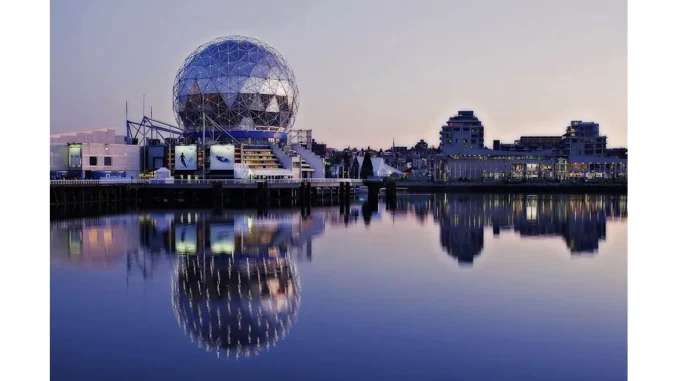
Temporary structures are revolutionising the realm of spatial solutions, providing significant flexibility, cost-efficiency, and rapid deployment capabilities. These versatile constructions are increasingly being utilised across various sectors, from emergency shelters and event venues to additional storage facilities. However, as their popularity grows, it becomes imperative to thoroughly understand the legal and planning requirements necessary for their successful implementation.
Read more about sustainable development.
In today’s rapidly evolving world, organisations and businesses must swiftly adapt to changing demands and circumstances. Temporary structures have emerged as a groundbreaking solution to meet these needs. Their ability to be quickly erected and reconfigured makes them an ideal choice for numerous scenarios. However, before delving into their myriad benefits, it is crucial to comprehend the legal framework governing their use.
Securing planning permission is a pivotal initial step in the deployment of temporary structures. Generally, if a temporary structure will be in use for more than 28 days or exceeds 100 square metres in floor space, planning permission is required. John Smith, a project manager at Temporary Solutions Ltd., underscores, “Obtaining planning permission is a critical milestone. It’s the first step in turning a vision into reality.” The UK government’s planning portal further outlines additional stipulations, including ensuring that these structures do not obstruct public pathways or traffic and that they comply with fire safety regulations. Non-compliance can result in significant fines and the enforced removal of the structure.
The principles governing standalone temporary structures also extend to modifications of existing infrastructure. Businesses frequently employ temporary buildings to augment their permanent facilities. For example, adding an extension to an existing warehouse or office space also necessitates planning permission. Sarah Johnson, a compliance officer at Building Extensions Co., explains, “Many of our clients are surprised to learn that even temporary extensions need to undergo the same rigorous approval process.”
Temporary structures are not merely stopgap measures; they represent a strategic asset with several advantages over traditional buildings. Firstly, they are significantly more cost-effective to construct than permanent edifices, making them an attractive option for startups and small businesses. Secondly, their construction speed is unparalleled, allowing them to be erected within a fraction of the time required for traditional buildings, which is particularly beneficial for projects with stringent deadlines. Additionally, these structures offer remarkable flexibility, as they can be easily relocated or modified. Many are also made from recyclable materials, enhancing their sustainability. Lastly, their versatility is evident in their wide range of applications, from emergency shelters and medical facilities to event spaces and storage units.
A notable example of the utility of temporary structures was their deployment during the COVID-19 pandemic. Hospitals worldwide rapidly erected temporary medical facilities to manage the surge in patients. “Without these temporary structures, our healthcare system would have been overwhelmed,” notes Dr Emily Clarke, a healthcare administrator. Similarly, the 2020 Tokyo Olympics utilised temporary buildings for various purposes, including athlete housing and event spaces. Kenji Nakamura, a logistics coordinator for the Tokyo Olympics, reflects, “These structures allowed us to meet our logistical needs without committing to permanent infrastructure.”
Despite their numerous benefits, the adoption of temporary structures is not without challenges. Navigating the complex maze of planning and legal requirements can be daunting. Businesses must be diligent in understanding and complying with these regulations to avoid potential pitfalls. Interestingly, the rise in the use of temporary structures has also led to a more streamlined approval process in some regions. Laura Green, a legal advisor specialising in construction law, observes, “Local authorities are becoming more familiar with these types of projects, which has led to quicker turnaround times for planning permission.”
Businesses must also consider the limitations of temporary structures. They inherently have a shorter lifespan compared to permanent buildings, and maintenance costs can accumulate over time, especially for structures exposed to harsh weather conditions. Mike Thompson, an architect at Space Solutions, remarks, “It’s a balancing act. Businesses need to weigh the immediate benefits against the long-term costs.”
The future of temporary structures appears promising, driven by technological advancements. Innovations in materials science are leading to the development of more durable and sustainable materials. Dr Rachel Adams, a materials scientist, notes, “We are seeing a shift towards using advanced composites and modular designs that offer greater durability and flexibility.” As the use of temporary structures becomes more widespread, regulatory frameworks are likely to evolve to better accommodate these innovations. Laura Green predicts, “We anticipate more standardised guidelines and a more streamlined approval process in the future.”
The applications for temporary structures are set to expand further. With climate change leading to more frequent natural disasters, the demand for emergency shelters is expected to rise. Additionally, the growing trend of remote work could spur the use of temporary office spaces. Mike Thompson concludes, “The future is bright for temporary structures. They offer a versatile solution in an ever-changing world.”
To summarise, while temporary structures present a compelling alternative to traditional buildings, businesses must navigate a complex landscape of planning and legal requirements. As technological advancements and evolving regulations shape the future, the potential for these innovative solutions will only grow. Temporary structures are transforming our approach to space solutions, offering an array of benefits in a dynamic world.


Be the first to comment